Words by Seb Morgan
Located in Taiwan’s verdant East Rift Valley, Tafalong is an unspoiled Amis village with roots that run deep into the nation’s oral history. This September, MyTaiwanTour allowed us to discover why this unique community is a gem hidden in plain sight. (See also: 3 Tribes You Need to Visit in Eastern Taiwan)
Go Shopping with the Amis, the “Grass Eaters”
“Ina, pinaen?”
Iilid (our local guide) passes the vendor a handful of coins, before turning to show us a bag of what looks like tiny green pumpkins. “Bitter eggplant,” she announces proudly, “it’s twice as strong as bitter melon.”
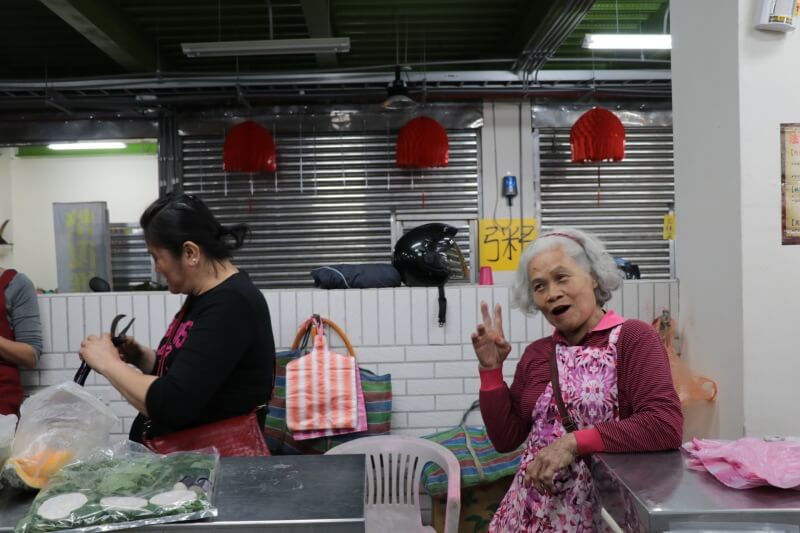
We all lean in for a closer look. Like much of the produce at Guangfu First Market, bitter eggplant is rarely eaten elsewhere in Taiwan. But as we’re learning, few veggies fly under the Amis’s radar. About half of Guangfu’s 13,000 people belong to this indigenous group, whose historic ties to the jungled hills and fertile lowlands of the East Rift Valley are reflected in their uniquely varied and nutritious diet. “Most Amis can recognize over 150 wild vegetables — and know how to use them in the kitchen,” says Iilid, now holding a handful of deep purple pods — hyacinth beans.
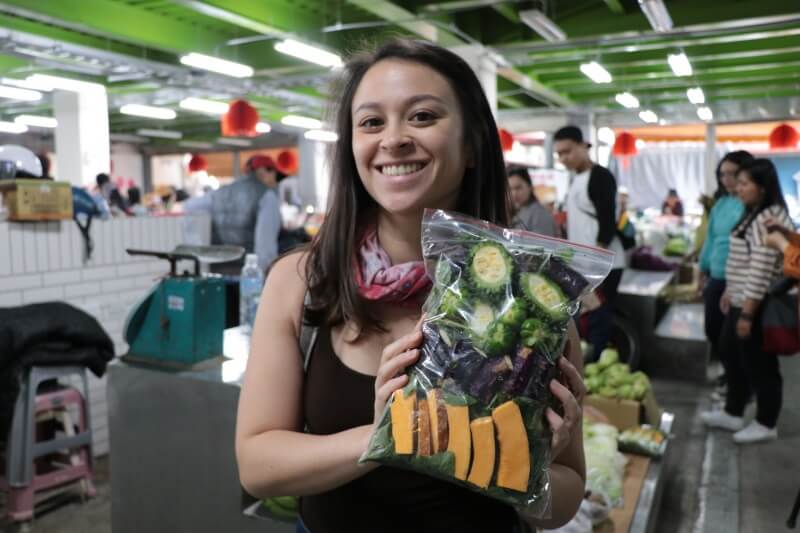
Guangfu and the adjacent village of Tafalong are located in sparsely populated Hualien County, about a three and a half-hour drive out of Taipei. Once cut off by mountains from the island’s predominately Han Chinese western half, this is a place where many of Taiwan’s aboriginal cultures thrive. Over 52,000 Amis alone live throughout the region, many of them in the forest-fringed communities south of Hualien City and along Taiwan’s east coast. (See more in Hualien: Coastal Hualien – Taiwan’s “Secret” Backyard Garden)
Let the Cooking Begin
“I hope you’re still hungry.”
Iilid shoots a doubtful look at the bag of sweet peanuts in my hand as I step off the bus, and a moment later, I understand why. We’ve arrived at a spacious log house surrounded on all sides by emerald rice paddies and gently swaying palm trees. Inside, a dining table bigger than my crappy studio apartment awaits, each of its 20 places set with a trio of artfully presented sticky red rice balls. I take a seat, slipping the peanuts discreetly into my backpack as I do so. I don’t want to disappoint Iilid again.
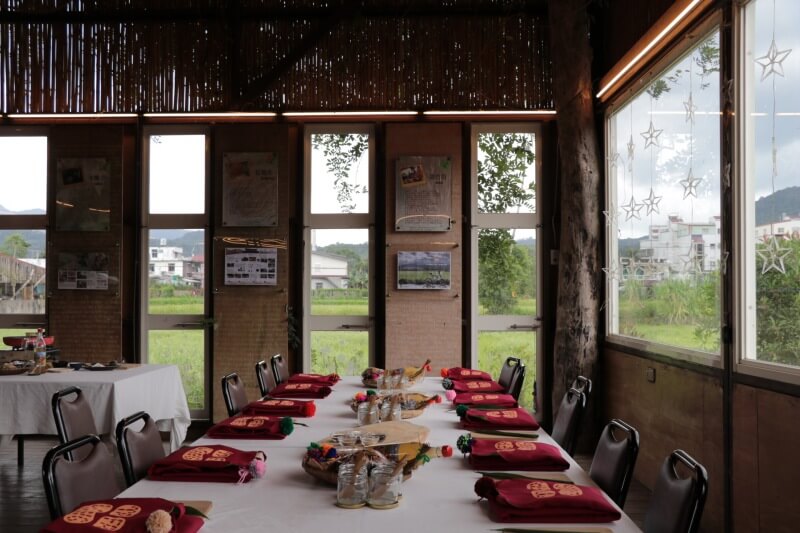
Known among themselves as “a nation of grass eaters,” the Amis seem to have a way of taking just about everything that grows in their lush subtropical surroundings and adapting it for the kitchen. If you’re a fan of gorging guilt-free on bright, natural flavors, picking delicate morels out of exquisite handcrafted bamboo baskets, or peeling freshly ground rice mochi straight off the mortar, the Amis are your guys to go to.
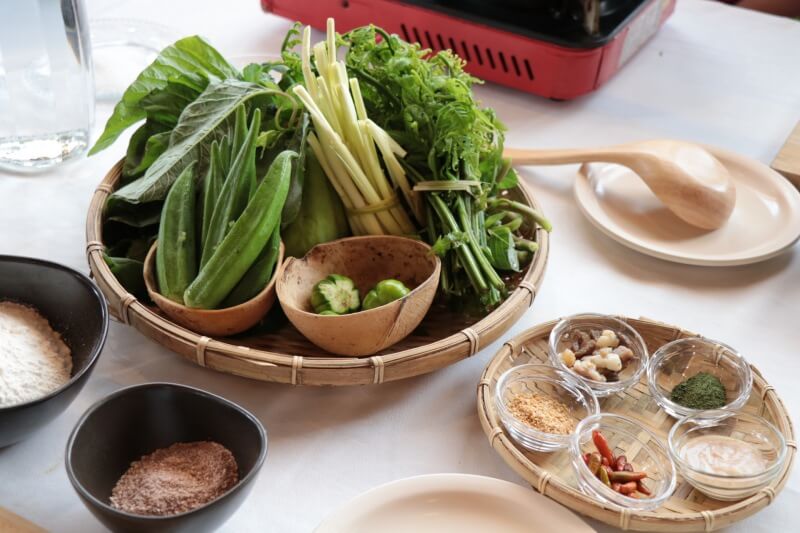
Still, there’s no such thing as a free lunch. Before food can be served, we must first get to grips with the ins and outs of a traditional Amis kitchen. Our instructor for the afternoon, Tai-zhou, is a twenty-something chef with the saint-like patience you’d need for dealing with a group of kitchen-clueless tourists, and calmly shows us how to make red sticky rice pancakes. Over individual gas stoves, we boil potfuls of shamrock-hewed greens, the names of which never cropped up in my Chinese textbook: basil-like datougen (大頭根), chartreuse cangdou (蠶豆) beans, curled fronds of guomao (過貓) — an edible fern whose name translates into English as “pass the cat.” (You might also like: Experience Taiwanese Food in the most Authentic Way Possible at Cookinn Taiwan)
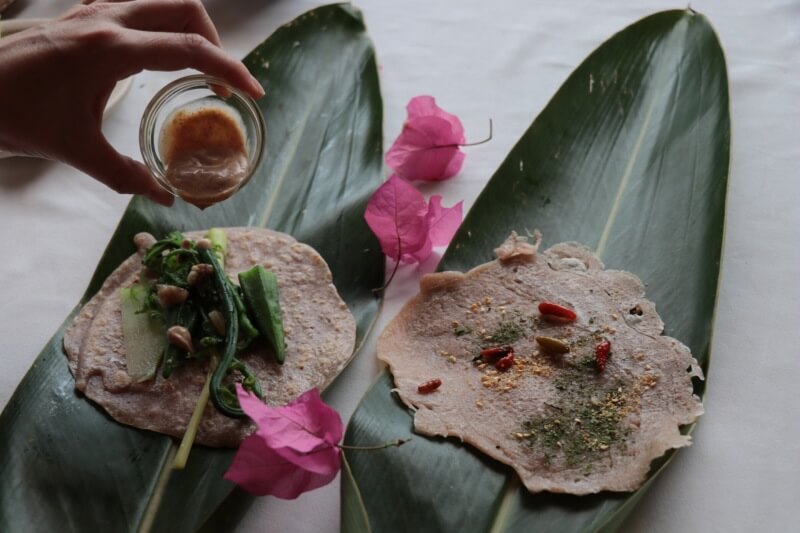
Vegetables boiled, we turn our attention to the pancake mix, which after a little (read: a lot) of helpful intervention from Tai-zhou we turn into wafer-thin crepes. These are then layered up with the veggies and seasoned with salted pork, crushed peanuts, and a mildly spicy mayo, before being folded up like a burrito and wrapped in a banana leaf, and decorated with bougainvillea blossoms. And to think that yesterday I had cornflakes for dinner.
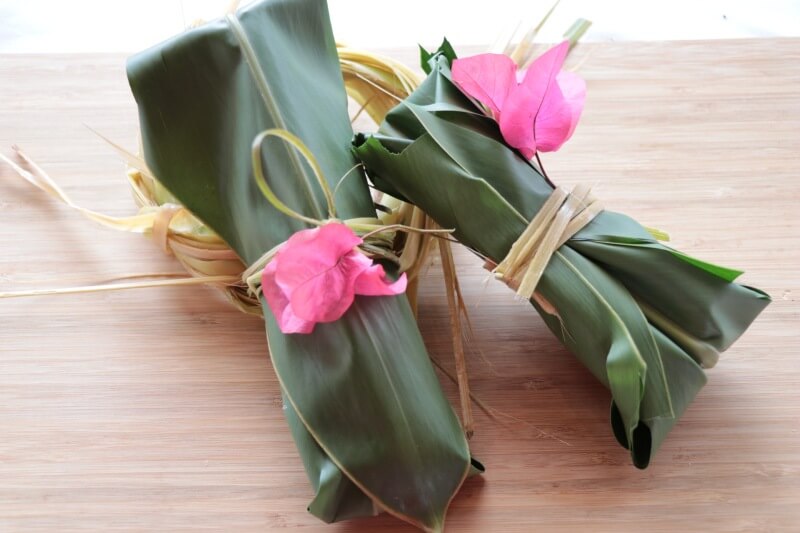
Meet the Village Elders
I’m eager to deflower my veggie-packed burrito. But before I can do away with the bougainvillea, Iilid is back. Apparently, there’s no time for a burrito break right now — the village elders would like to meet us. Before I know it we’re back on the bus, burritos in laps, and trundling past bucolic rice farms as we make our way to Kakita’an, the Tafalong ancestral hall.
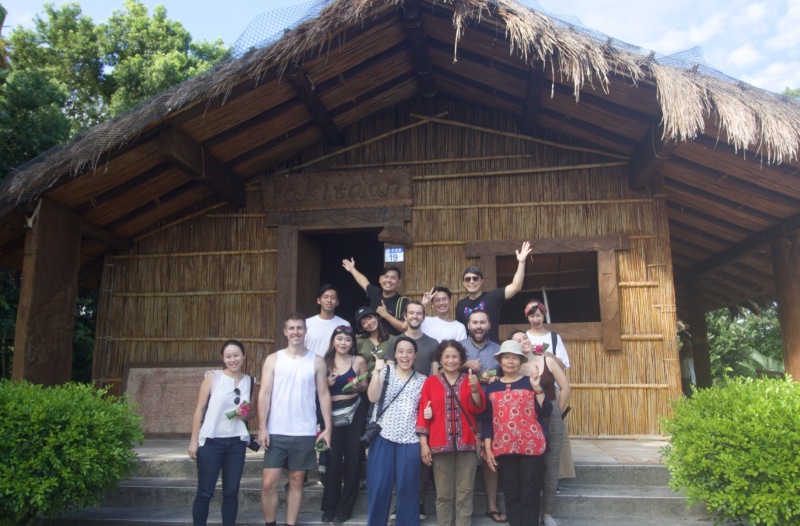
Kakita’an, as it turns out, has a mystic past. According to local oral history, it was the home of Taiwan’s first aboriginal family and the site of Taiwan’s first tragedy. The family had six children, the youngest of which, a radiant girl named Tiyamacan, was stolen away one day by a vengeful sea god. Wishing to rescue her, the other children each set out on an epic journey, spreading aboriginal culture across Taiwan and the Pacific Ocean. (Read more: Travel Deeper in Eastern Taiwan: Hualien and Taitung)
Standing against a grove of broad-leafed trees, Kakita’an is a longhouse with rattan walls and a sloping thatched roof. We wait by the entrance, watching as two sisters of the 56th generation of Tafalong leaders make offerings of millet wine and fragrant betel nut for her ancestors. Though we are not able to step inside the hall, they show us to its entrance. Inside, various other offerings have been arranged around an elaborate pillar carving of a woman. “Tiyamacan,” one of the sisters tells us, “the radiant girl.”
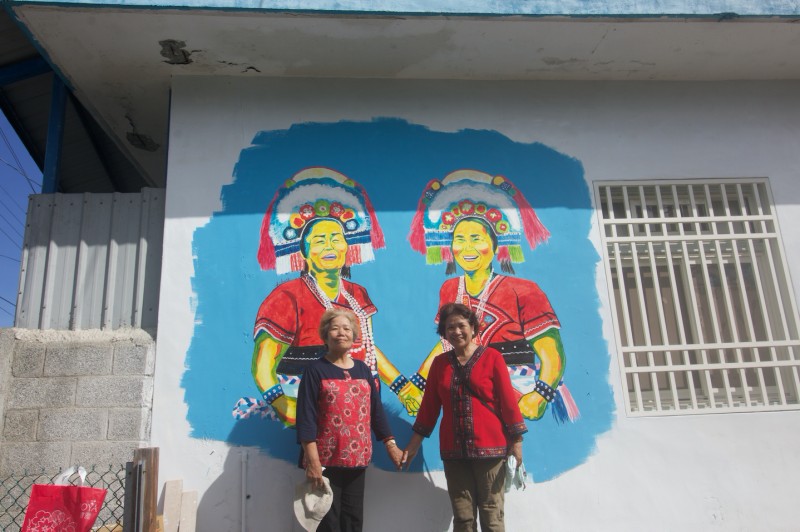
Bon Appétit
After some further words on Kakita’an from the village elders, we’re back on the bus and headed for the log kitchen. At last, it appears it’s time for us to eat. The studio apartment floorplan of a table has been cleared and replaced with an exuberant buffet: tender buttery cuts of pork, wild vegetable pancakes, and barbecued white fish. More millet wine is brought to the table, this time in the guise of a refreshing lemon cocktail. After dessert, a tart berry compote, we pound through the homeward stretch by mashing our own sweet peanut mochi in gigantic mortar and pestles. Iilid, it seems, was right — I didn’t need that bag of sweet peanuts after all!
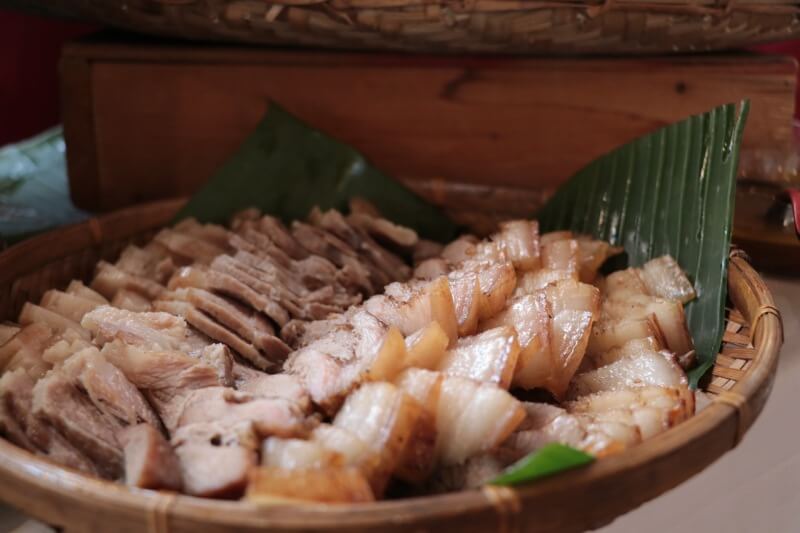
Do you want to embark on your own Amis adventure? Book your Tafalong cooking trip now! Get in touch about your own custom experience here, or if you want to explore further down Taiwan’s East coast, check out this 5-day private itinerary.











